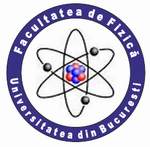| |
 |
UNIVERSITY OF BUCHAREST
FACULTY OF PHYSICS Guest
2025-10-05 22:30 |
 |
|
|
|
Conference: Bucharest University Faculty of Physics 2025 Meeting
Section: Nuclear and Elementary Particles Physics
Title:
Characterization and Performance Evaluation of PTW Spherical Ionization Chambers TM32003 and TM32002 for Ambient Dose Equivalent Rate Measurements
Authors:
Sandra TUDURACHE (1, 2); Stela PĂTRAȘCU (2); Mihaela PÂRVU (1)
Affiliation:
(1) University of Bucharest, Faculty of Physics, POBox 11, Magurele, Romania
(2) National Institute for R&D in Physics and Nuclear Engineering (IFIN-HH), DRMR-LMRI
E-mail
sandra.tudurache@s.unibuc.ro
Keywords:
Collimated beam geometry, Spherical ionization chamber, Ambient dose equivalent H*(10)
Abstract:
In this study, we present a detailed evaluation of two PTW spherical ionization chambers—TM32003 (10 liters) and TM32002 (1 liter) - used in health physics for measuring the ambient dose equivalent, H*(10). As required by ISO 4037, a polymethyl methacrylate (PMMA) plate was positioned in front of the chambers during measurements to ensure secondary electron equilibrium, essential for accurate determination of operational quantities. Although H*(10) is defined in an idealized, expanded and aligned radiation field, this condition serves only as a theoretical reference to ensure consistency and traceability of the quantity across measurement systems. In practical applications, area monitors are not required to operate in such ideal fields but are expected to approximate the defined quantity through their design, particularly via isotropic response.
Measurements were performed using a Cs-137 source in a collimated beam geometry with an opening angle of 8°, and dose rate results were compared to the reference values stated in the calibration certificate of the irradiation facility. Notably, the 1-liter chamber exhibited smaller deviations from reference values compared to the 10-liter chamber. This behavior is attributed to the more favorable beam alignment with respect to the smaller sensitive volume, making it more compliant with the conceptual aligned geometry defined for H*(10). Additionally, the detectors were tested for stability using a Sr-90 check device, and all readings remained within the accepted tolerance limits.
Our findings underline the importance of adhering to standardized measurement protocols and highlight the performance of spherical ionization chambers in realistic, collimated beam conditions. The study also emphasizes the significance of considering irradiation geometry and instrument response characteristics when interpreting operational quantities.
References:
[1] PTW Ionizing Radiation Detectors – Including Codes of Practice, 2015.
[2] LALAU, I., ZADEHRAFI, M., PATRASCU, S., & IOAN, M. (2024). EXPERIMENTAL AND MONTE CARLO EVALUATION OF SPHERICAL IONIZATION CHAMBERS’RESPONSE TO 137CS RADIOACTIVE SOURCE. Romanian Journal of Physics, 69, 301.
[3] International Organization for Standardization, X and gamma reference radiation for calibrating dosemeters and doserate meters and for determining their response as a function of photon energy—Part 3: Calibration of area and personal dosemeters and the measurement of their response as a function of energy and angle of incidence, 1999ISO ISO 4037-3.
[4] IAEA Safety Reports Series No. 16, “Calibration of radiation protection monitoring instruments”, ISSN 1020–6450, Radiation—Measurements—Instruments— Calibration. I. International Atomic Energy Agency. II. Series, Vienna, January 2000. STI/PUB/1074.
|
|
|
|

